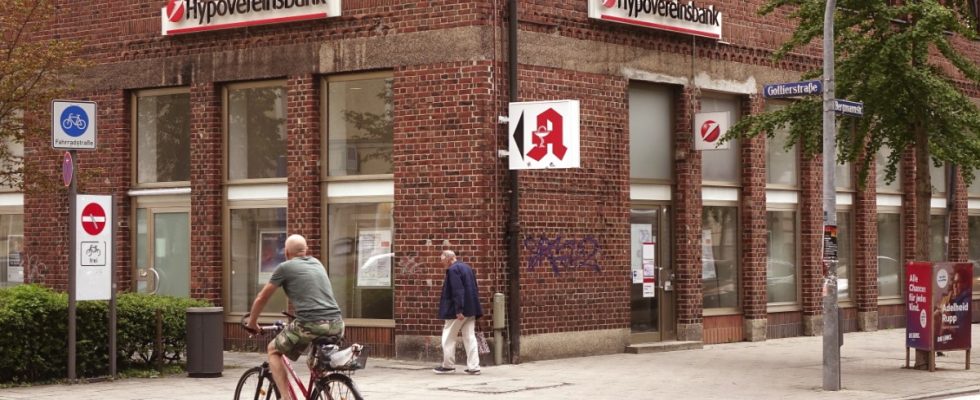The number of bank branches and ATMs in Munich continues to shrink. By the end of September, Hypovereinsbank (HVB) will be closing ten branches and merging their business with other branches. The Altperlach, Augustenstrasse, Berg am Laim, Großhadern, Harthof, Lehel, Münchner Freiheit, Obersendling, Waldtrudering and Gollierplatz locations will disappear. Not only are advice and counters no longer available there, but the self-service area with its ATMs is also mostly closed. Only on Leopoldstrasse, where the bank’s landlord gave notice, did HVB set up a new location with around ten self-service devices.
“Hypo is closing several branches that we have used up until now: Ostfriedhof, Berg am Laim, Altperlach,” says Marion Korn, who has been a customer of HVB for a long time. She lives in Obergiesing, but Unterhaching and Humboldtstrasse were offered to her as alternatives, neither of which can be reached on foot. “Who makes such decisions? At least self-service areas should be offered,” says Korn. “Customer friendliness? Nobody cares!”
Many Munich residents are like her: Access to cash is becoming increasingly difficult. However, a spokesman for HVB points out that there is a trend towards cashless payments and that less cash is withdrawn from ATMs today than in the past. In addition, customers can use their HVB Girocard not only to withdraw cash free of charge from the bank’s own ATMs, but also in many supermarkets when shopping, at Shell petrol stations and ATMs of the Cash Group (Deutsche Bank, Commerzbank, Postbank).
This is often not a great help, because the competition also has fewer and fewer branches and ATMs. In the Schwanthalerhöhe district, for example, neither Deutsche Bank nor Commerzbank are represented. The Postbank there has long since closed its only branch – despite protests. It could no longer be operated to cover costs, it was said a good two years ago. Even if many people came to the branch, there wasn’t much money to be made with their classic postal business – picking up parcels, buying stamps – plus cash payments.
For the approximately 30,000 residents of the Schwanthalerhöhe there are still ATMs from the Stadtsparkasse and the opportunity to withdraw money in drugstores and supermarkets or at discounters. But HVB customers pay 5.95 euros at the Sparkasse when they withdraw money with the Girocard. It may be cheaper with a credit card.
But HVB is not just thinning out. “In return, we are significantly expanding the range of advisory services at some locations: for example at Kurfürstenplatz or Neuperlach,” says the company spokesman. In most cases, the customers in the new branch could be looked after by the usual advisors from the old locations. In addition, with around 30 locations in the future, the bank will still operate the densest branch network of all private banks in Munich.
The striving for banks in Germany – more precisely: the disappearance of branches – began around the turn of the millennium. Digitization is responsible for this: Innovative technologies, new competitors and changing customer requirements created pressure to adapt – away from the branch network and towards online offers and mobile phone banking. Added to this are cost pressures and low interest rates for a long time.
Banks, savings banks and cooperative institutes are thinning out their branch networks almost everywhere in Germany, the Bundesbank reported at the beginning of July this year. Accordingly, the number of domestic branches fell significantly by almost six percent in 2022 – after a decrease of ten percent in the previous year. The experts write that the increasing spread of online banking “has had an accelerating effect”.

